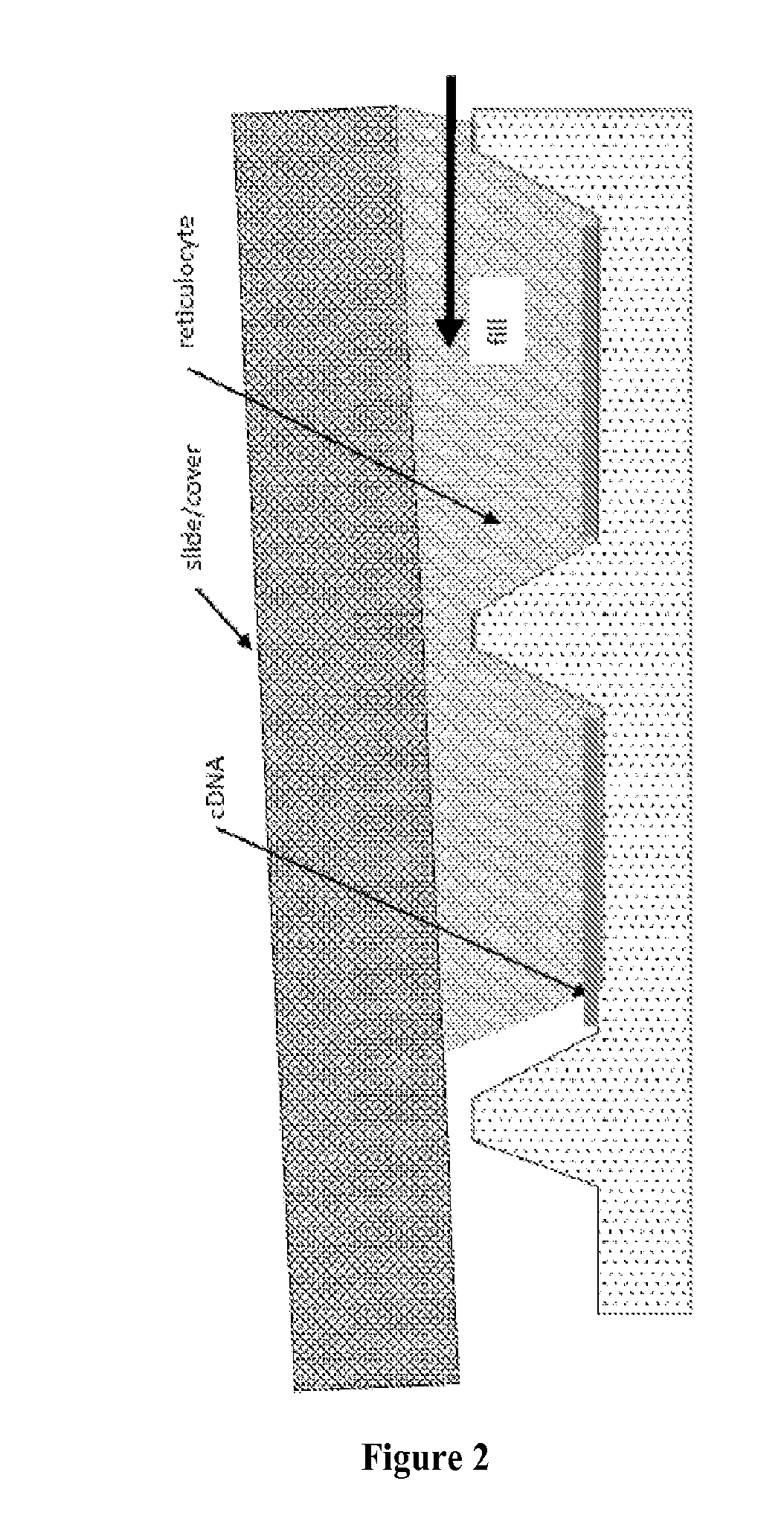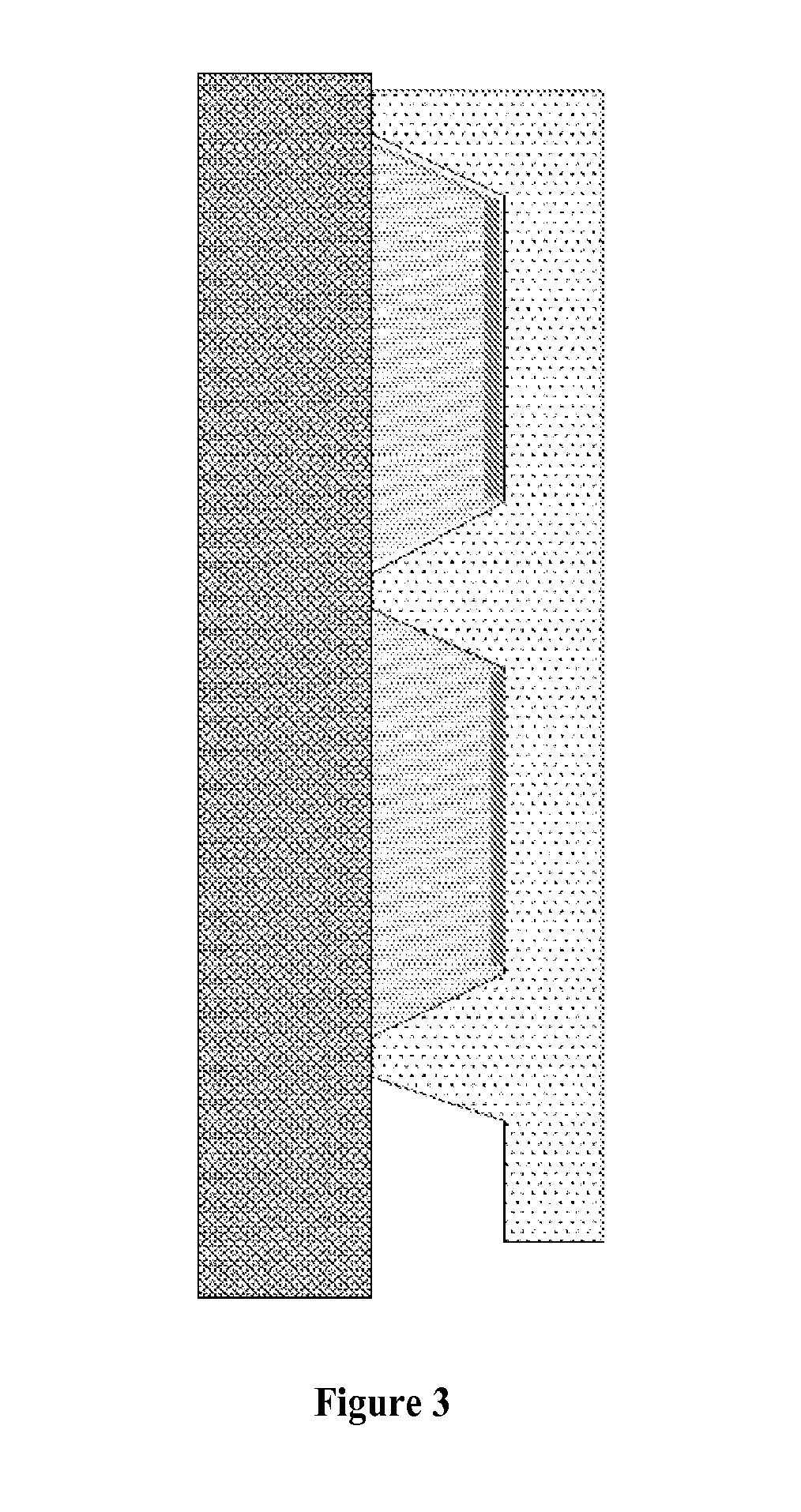Programmable Arrays
a technology of programmable arrays and arrays, applied in the field of programmable arrays, can solve the problems of many inherent logistical problems in the process flow, many proteins are unstable, and many of the emerging microarrays have yet to reach their full potential
- Summary
- Abstract
- Description
- Claims
- Application Information
AI Technical Summary
Benefits of technology
Problems solved by technology
Method used
Image
Examples
examples
[0145]In this study, we sought to determine whether in situ synthesis of NAPPA reactions suffered from diffusion-related cross-talk at higher array densities. We then sought to solve the problem of diffusion with an innovative silicon nanowell platform that used the NAPPA protein arrays system as a test case. This platform enables confined biochemical reactions in physically separated nanowells. The NAPPA method was adapted to nanowell array substrates produced using silicon micro fabrication technology, which enables high-throughput, high-fidelity fabrication of nanowell substrates. We have also simultaneously developed a precise and accurate high-throughput liquid dispensing system to align and dispense genes and reagents into individual wells. After in vitro expression of proteins in the nanowells with a sealed cover, we demonstrated successful protein display in wells with negligible diffusion. Preliminary results also indicated functional protein that allows detection of known ...
PUM
 Login to View More
Login to View More Abstract
Description
Claims
Application Information
 Login to View More
Login to View More - R&D
- Intellectual Property
- Life Sciences
- Materials
- Tech Scout
- Unparalleled Data Quality
- Higher Quality Content
- 60% Fewer Hallucinations
Browse by: Latest US Patents, China's latest patents, Technical Efficacy Thesaurus, Application Domain, Technology Topic, Popular Technical Reports.
© 2025 PatSnap. All rights reserved.Legal|Privacy policy|Modern Slavery Act Transparency Statement|Sitemap|About US| Contact US: help@patsnap.com



